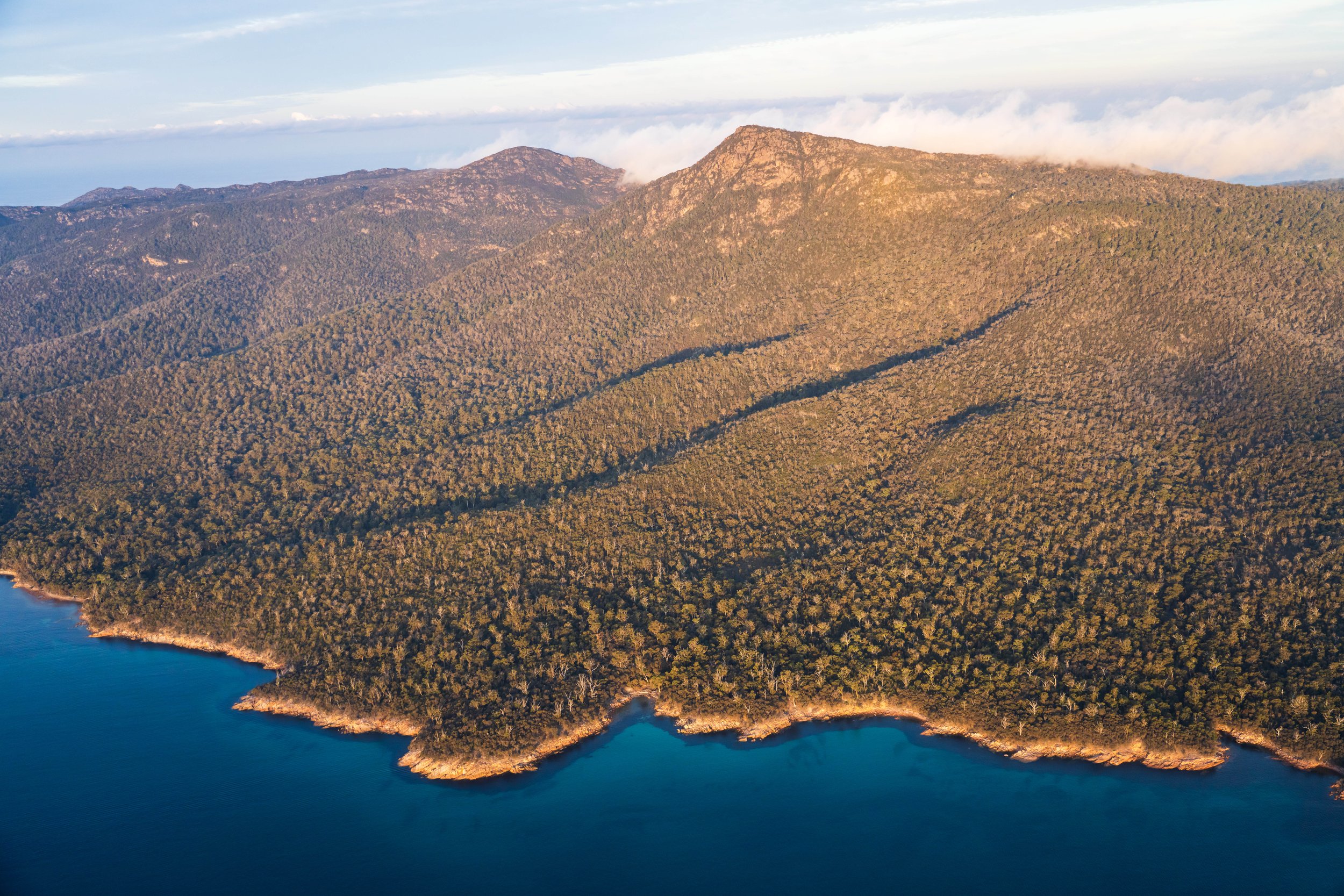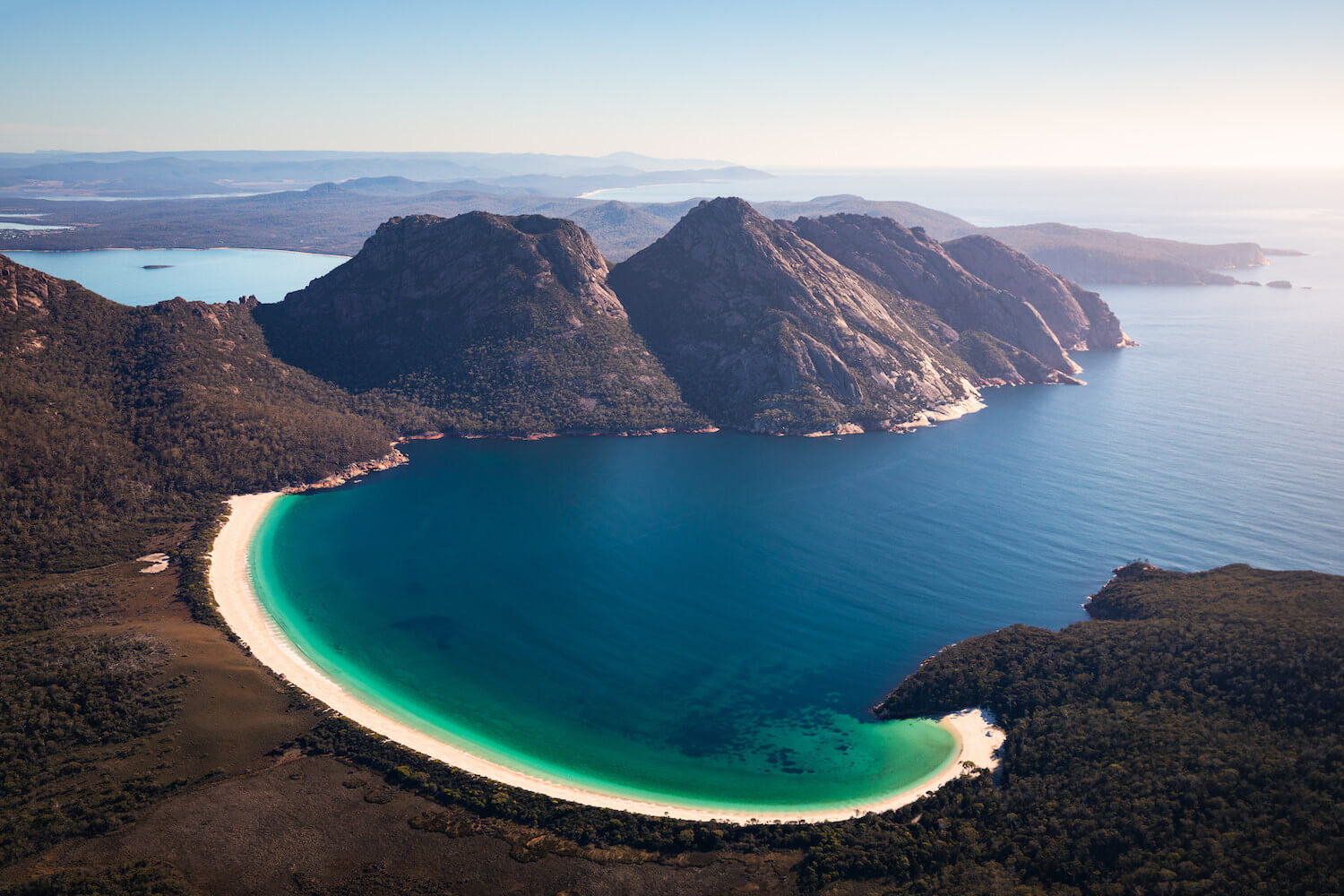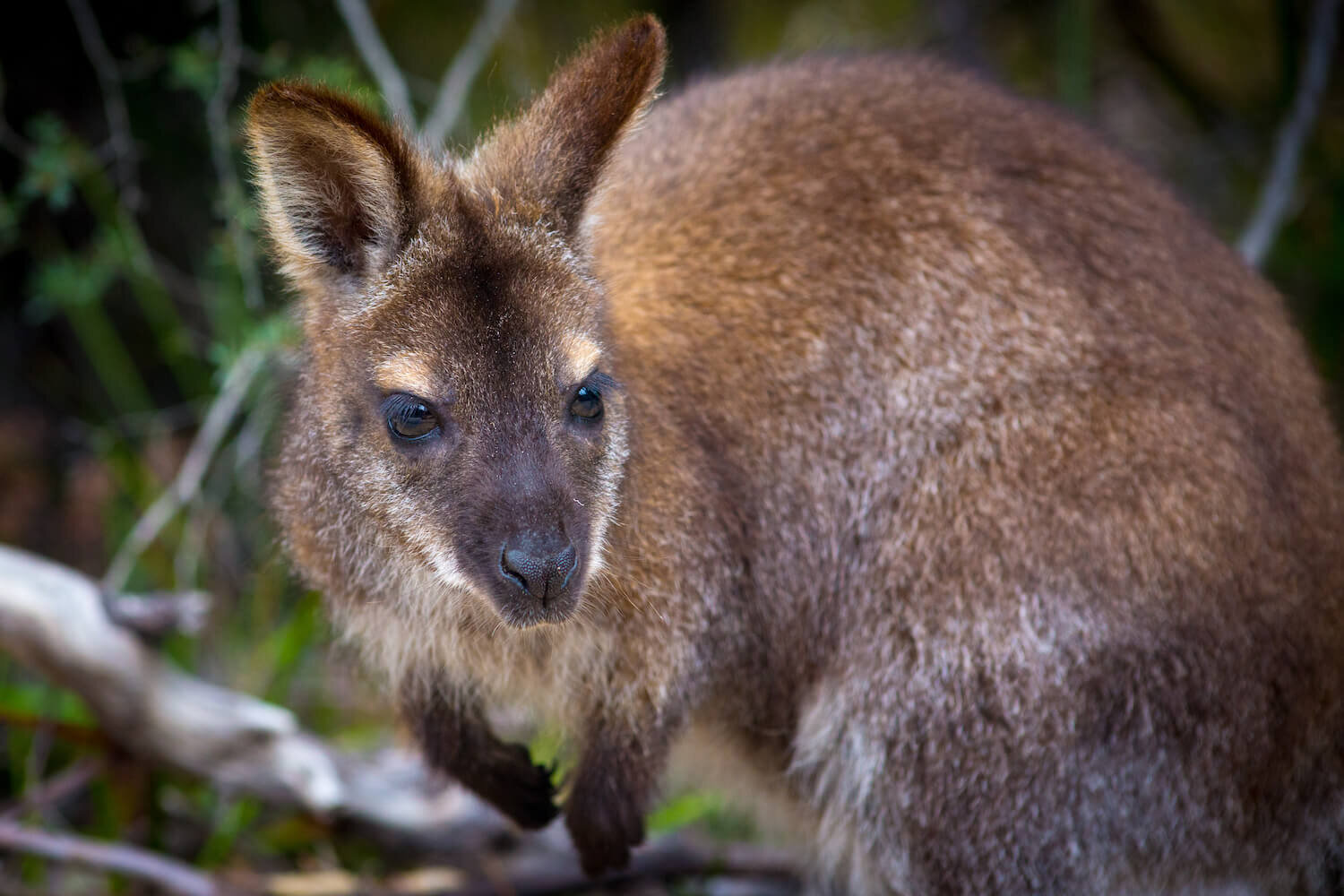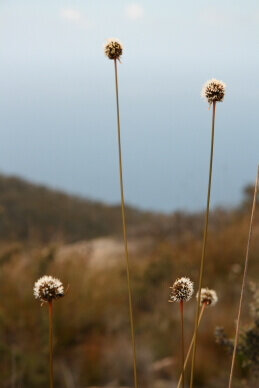
FREYCINET
NATIONAL PARK
THE DESTINATION
We are lucky to call a very special part of Tasmania home. White sand beaches, flaming orange lichen, rugged peaks and deep blue water that will take your breath away.
From the coast to the highest peaks, your journey with us will have you taking in stunning vistas as far as they eye can see. Sure, appropriate walking attire is a must, but a camera is essential!
Freycinet & Wineglass Bay
This 38km long promontory of wild, pristine coast is a land of sugar-white beaches, clear blue seas, ancient forests and heathlands scattered with rare wildflowers. The entire Peninsula, including Friendly Beaches, Wineglass Bay and Schouten Island, is encompassed in the Freycinet National Park. Established in 1916, this is Tasmania’s oldest national park.
Wineglass Bay, a perfect arc of blond sand and ice-blue water, is the jewel of the Freycinet Peninsula and recognised as one of the world’s best beaches. On the peninsula’s eastern side, soaring sea cliffs, sculptured boulders splashed with bright orange lichen and The Hazards’ pink granite peaks are a spectacular sight. To the south lies the mysterious, uninhabited Schouten Island.
Numerous ancient shell middens and remnants of seafood meals are found throughout the Peninsula and especially at Friendly Beaches. These were left by the original inhabitants, the Oyster Bay Tribe, the largest of nine Tasmanian Aboriginal tribes that made the island their home for over 20,000 years, before Europeans arrived in 1802.
Tasmanian Wildlife
Freycinet National Park is a haven for some of Australia’s most famous and rare fauna and flora. With the surrounds of the Lodge protected under an environmental covenant, watching for wildlife provides endless intrigue as echidnas, wallabies and wombats scamper in and out of sight close by. At night, visitors may be lucky enough to spot spotted tailed quolls, long nosed potoroos, the diminutive New Holland mouse and even the endangered Tasmanian devil. Some 130 bird species including including several Tasmanian endemics as well as the chatty Yellow Tailed Black Cockatoo, Hooded Plover, Black Swan and the Peregrine Falcon have been recorded in the region.
The waters off the Peninsula are alive with marine life. Pods of seals and bottlenose dolphins are often spotted at play, as well as the majestic southern right and humpback whales that spend time here during winter migration.
For flora enthusiasts, our walking guides will point out rare bush orchids, towering grass trees, sunshine wattle, spinifex, casuarina, heaths, honeysuckle and much more.
View our Tasmanian wildlife gallery.
Friendly Beaches
Thought to be named after Europeans’ first encounters with Aboriginal tribes that lived in the area, Friendly Beaches stretches for nine kilometers along the northern end of the Freycinet National Park. Its pristine, sugar white sands are home to many sea birds including sea eagles and the endangered hooded plover, as well as pied oyster catchers, yellow-tailed cockatoos, wattlebirds, bronze winged pigeons, white-bellied sea-eagles, masked owls and more.
Heady bush scents mingle with the salty ocean air as guests stroll through the sublime coastal forest of Banksias, Kunzia, Casuarinas, Grasstrees (Xanthorrhoea) and the endemic Oyster Bay Pine. Or take a short walk to the Saltwater Lagoon to view elegant black swans that breed here abundantly. In the splendid isolation of this stunning coastline, time seems to stand still.
Discover more hidden gems here.
WEATHER IN TASMANIA
The Tasmanian seasons bring an array of sensations and highlights for you to enjoy. From crisp autumn days to balmy summer afternoons, you can experience the delights of the (sometimes unpredictable) weather in Tasmania.
Wildflower paradise
November and December
Visit us during this time and you’ll enter a wildflower wonderland! Freycinet’s forests are bursting with the sweet honey-like scent of the flowering white Kunzea (Kunzea ambigua) – a sensory experience you’re unlikely to forget. This is also the time to enjoy the last of the striking yellow rock orchids and Mt Graham’s large duck orchids.
On the boat to Schouten Island, dolphins leap and southern right and humpback whales follow their seasonal migration routes, often with calves in tow. It’s also mating season for echidnas, which means these normally shy creatures are more likely to be spotted trundling about!
Perfect summer
January and February
During Tasmania’s summer, average temperatures are in the mid 20s, warmer ocean currents have arrived and the world’s clearest oceans are more inviting than ever. Long sunny days are perfect for swimming, snorkeling and exploring these pristine waters.
White-bellied Sea Eagles, Crested Terns and the threatened Hooded Plover can be spotted patrolling the beaches. It’s also festival time in Tasmania – the ideal opportunity to combine your walking holiday with a range of cultural and culinary events.
Autumn adventure
March and April
Tasmania’s weather is never more stable than during this time. Water temperatures are still relatively high, so it’s often still warm enough for an ocean plunge. Fishing is also at its best, with abundant salmon and flathead catchable off the boat or beach. Flowering pink wattle, autumn tea trees and rosy hyacinth orchids are all in bloom, while echidnas are active and scarlet robins are regular Lodge visitors.
In the evenings, enjoy a wine by the open fireplace, star gaze under the clear skies, or take a night stroll along the moonlit beach. If you’re lucky, you’ll be joined by wombats, Tasmanian Devils and eastern Pygmy possums.















